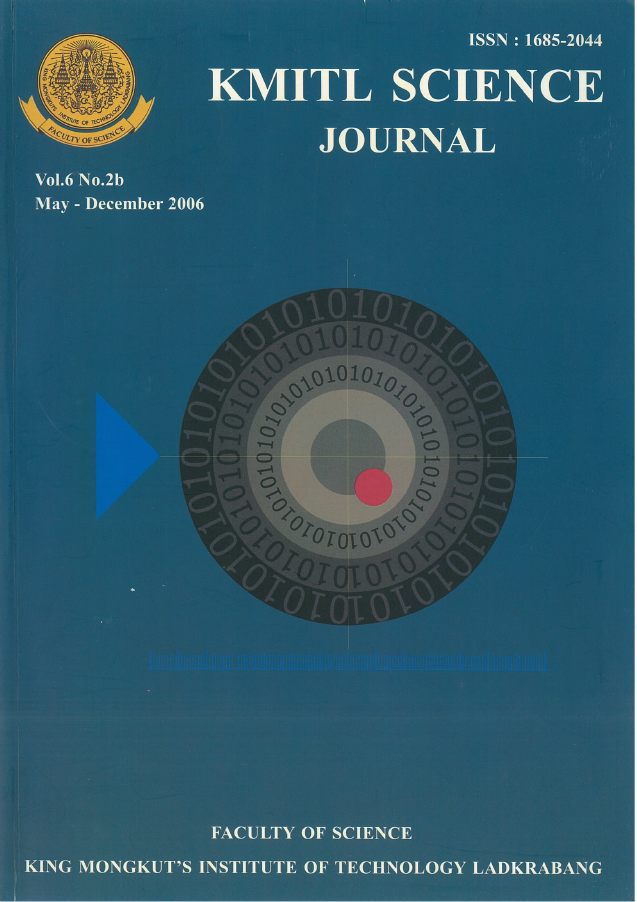Significant Parameters on the Deviation of Hair Conditioner Viscosity: Part I. Regression Analysis by the Minitab Program
Main Article Content
Abstract
According to highly competitive business, the production of high quality products at the lowest coast becomes the most important business strategy. In this case study of a hair conditioner process, the deviation of hair conditioner viscosity leads to product loss of about US$ 100,000 in 2004. The highest standard deviation of the product viscosity was 4,217 cP corresponding to the defect per million opportunities (DPMO) of the process of 532,230. A Cause and Effect diagram was used to detect the potential causes; subsequently the Minitab program was applied to pinpoint the significant parameters. The analytical results indicate that six parameters, which are quantities of chlorinated water and chilled water, melting time of fatty alcohols, cooling period after adding chilled water, times used for adjusting the temperature of chilled water and for adding the additives, play significant effect on the deviation of hair conditioner viscosity.
Keywords: Viscosity, regression analysis, Minitab program, Cause and Effect diagram
Corresponding author: E-mail: kwanchal@kmitl.ac.th
Article Details
Copyright Transfer Statement
The copyright of this article is transferred to Current Applied Science and Technology journal with effect if and when the article is accepted for publication. The copyright transfer covers the exclusive right to reproduce and distribute the article, including reprints, translations, photographic reproductions, electronic form (offline, online) or any other reproductions of similar nature.
The author warrants that this contribution is original and that he/she has full power to make this grant. The author signs for and accepts responsibility for releasing this material on behalf of any and all co-authors.
Here is the link for download: Copyright transfer form.pdf
References
[2] Rezayati-Charati, P., Mohammadi-Rovshandeh, J., Hashemi, S. and Kazemi-Najafi, S. 2005 Influence of Dimethyl Formamide Pulping of Bagasse on Pulp Properties, Bioresource Technology, [Online]. Available: http://www.sciencedirect.com.
[3] Temsawangleart, P. 2001 A Reduction of Bulk Density Variation in A Non-Soap Detergent Making Process. Master Thesis, Department of Chemical Engineering, Faculty of Engineering, King Mongkut’s Institute of Technology LadKrabang. (in Thai)
[4] Bird, R. B., Stewart, W. E. and Lightfoot, E. N. 2002 Transport Phenomena. 2nd Edition. United States of America, John Wiley & Sons.
[5] Barnes, H. A., Hutton, J. F. and Walters, K. 1989 An Introduction to Rheology. New York, Elsevier Science.
[6] MINITAB Inc. 2003 MINITAB Statistical Software Release 14.
[7] Economics Department, University of California, Berkeley. “Regression Analysis.” [Online]. Available: http:www.elsa.berkeley.edu/sst/regression.html.
[8] Breyfogle, F. W., Cupello, J. M. and Meadows, B. 2001 Managing Six Sigma. John Wiley & Sons.
[9] Currel, G. and Dowman, A. 2005 Essential Mathematics and Statistics for Science. John Wiley & Sons.


